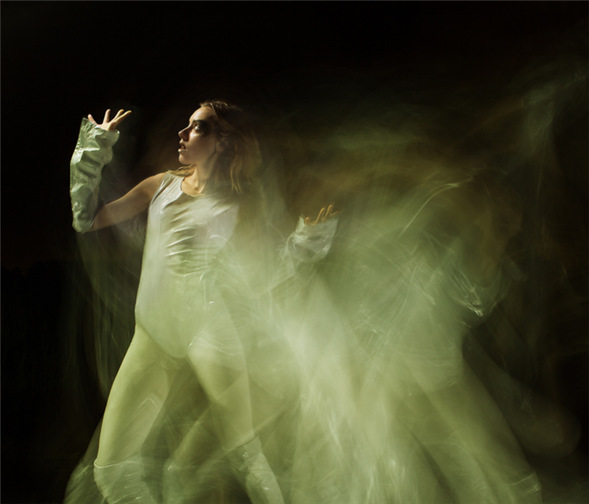Translate Page

You see more of it than you think
---
A friend recently posted on social media that rather than finish the paper she'd been preparing for an academic conference, she would perform an interpretive dance. This elicited cheers and likes and those brilliant emojis that laugh and cry at once. Imagining her at the lectern, gesticulating flesh, blood, and life into the staid, jargon-filled monologues of the typical anthropology presentation, I smiled and thought, "This is totally legitimate, and I want to see it!"
At the same, though, I suppressed a groan and thought, "This is not a thing!"
Interpretive dance. Can you say it without giggling? Without rolling your eyes? Maybe you picture something like this, someone reducing dance to farce, mocking its means of communication or indeed the notion that it could mean anything at all. Perhaps you envision Jules Feiffer cartoons of lithe, leggy women stretching limbs in all directions, faces raised in triumph to the sky. Black turtleneck-clad waifs who roll body parts and stare into the distance while cigarette-dangling beatniks recite imagistic poetry. Or perhaps you think of Maddie Ziegler and her bowl cut in any number of Sia videos. Maybe you remember Community gifs. Or a recent city council ambush in Portland, ME. The list goes on.
Even among dancers, the form is far from stable. Many of my generation and younger concur that "interpretive dance" is a term best laid to rest. A shorthand for something greeted with disdain and befuddlement among non-dancers, it encapsulates deeply American, post-Enlightenment values: Puritanical distrust of and fascination with the body and dance; Cartesian separation of mind from body; positivist obsession with rational logic.
Others speak to its historical legitimacy. A colleague remembers the interpretive dance classes she took as a child on Long Island in the late 1950s, which included improvisation, ballet and Graham technique, floor exercises, and multicultural folk dancing. Another describes an overwhelmingly white practice that broke from classical ballet and the "exotic" dance of early American modern, but that also excluded "ethnic" traditions of "primitive" cultures. Historical references situate it in the expansive dance environment of America's early 20th century, emphasizing personal and inner expression. Online dictionaries offers vague guidance at best, defining interpretive dances as movement that conveys emotion or tells a story.
{Image1}
Dancers object not only to what others find funny—that a body in movement can say something without speaking—but also to the notion that "interpretive" equals translatable, that there is a straightforward relation between movements and words or ideas. Such thinking assumes coherence, something explainable, an impossible tidiness. Folly. Relegating dance to the plane of language negates its singularity, its particular relation to the sublime.
Simply put, dance means differently. In a popular 2011 TED talk, scientist John Bohannon proposes that dance should replace power point as the go-to tool for illuminating big ideas. An earlier project, his 2007 Dance Your Ph.D. contest, elicited hundreds of applications from scientists, reinforcing his belief that "if you're trying to give someone the big picture of a complex idea, to really capture it's essence, the fewer words used the better. In fact, the ideal may be to use no words at all."
During his presentation, dancers from the Minneapolis-based Black Label Movement accompany Bohannon's description of an experiment in which he was cooling matter. Huddled en masse, they have laser precision. Darting, they scatter in a mad dash—photons bouncing randomly off surfaces at the speed of light. Oozing angles, they melt slowly into a borderless superfluid. Discrete movements do not stand in for words; rather, the lecture itself assumes a vitality, the ideas shimmer with energy, the dancers' bodies pulse with the larger connotations of the talk.
Oddly enough, the biggest champion yet of dance in all its potentiality might be one of the silliest television shows in recent history. Netflix's The OA is a mystery with so many forking paths and implausible storylines that it practically begs to be criminalized. But the show's heart centers on the power of dance. Non-narrative, palpable, alternate-universe-opening dance. Really. Referred to as "the movements" and unveiled sequentially (there are five in all), the breathy, ecstatic gestural phrases summon the torsos, limbs, faces, and lifeblood of co-creator/ star Brit Marling and her companions. This might all be too absurd, but the show is so far overboard that the dancing becomes a thing of wonder.
Unsurprisingly, much critical response to The OA underscores our culture's discomfort with dance, and the derisive undertones of the modifier "interpretive." The show is confounding, sure, but so is the use of the word interpretive here. Not just random gestures, the movements affirm the life-altering power of dance. In the strange, maddening world of The OA, dance is transcendent.
---
An anthropologist and tango enthusiast, Carolyn Merritt recently wrote the book 'Tango Nuevo'
TDF Members: Go here to browse our discounts for dance, theatre, and concerts.